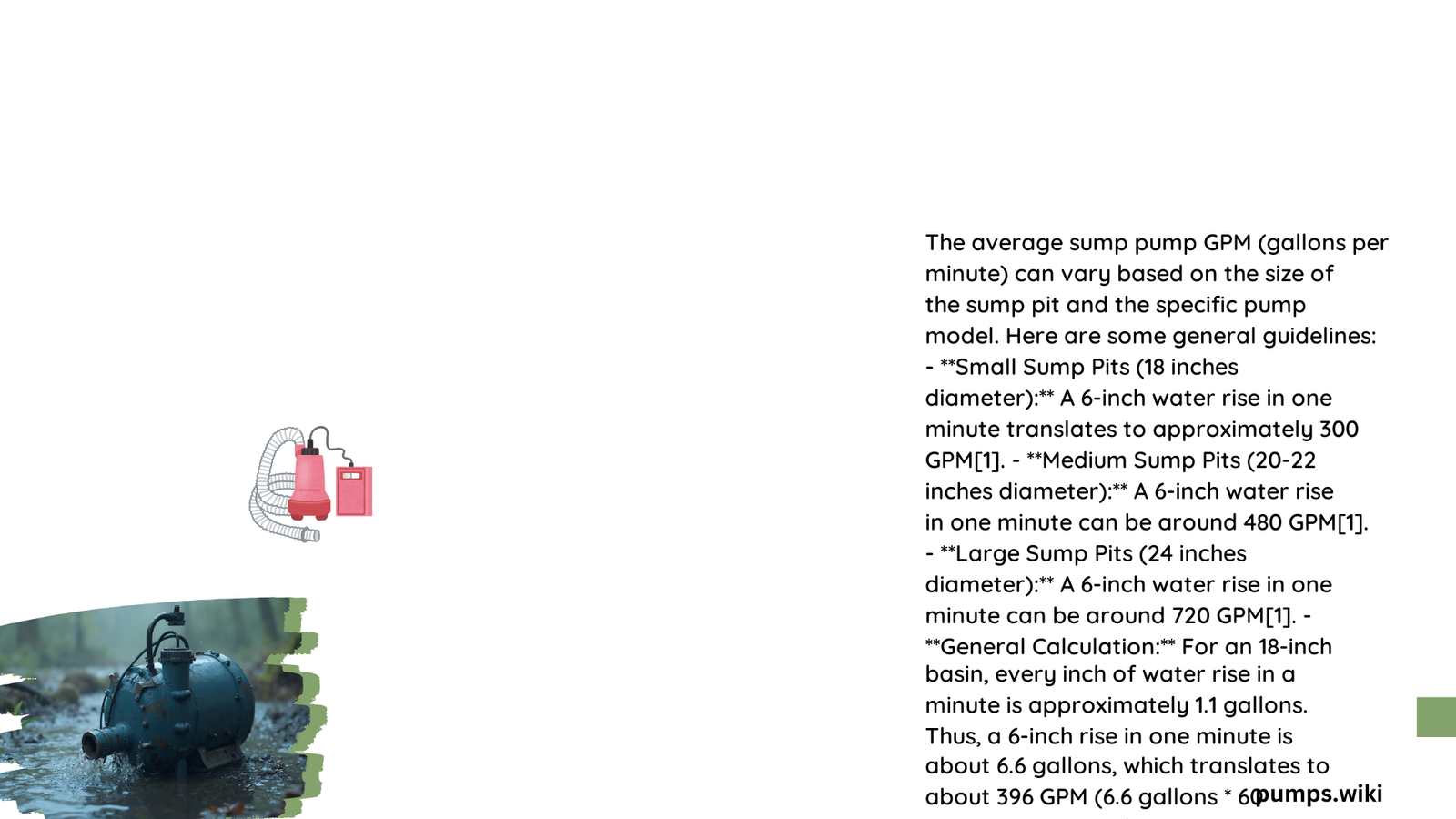Homeowners facing water management challenges need to understand the critical role of average sump pump GPM (gallons per minute) in effectively protecting their property. Sump pumps vary significantly in performance, with flow rates ranging from 35 to 90 GPM depending on horsepower, pipe diameter, and specific installation requirements. Understanding these nuanced factors helps prevent basement flooding and ensures optimal water removal during high-risk scenarios.
What Determines Sump Pump Flow Rates?
Sump pump flow rates are influenced by multiple critical factors:
Horsepower Impact on GPM
- 1/3 HP Pump: 35-40 GPM
- 1/2 HP Pump: 45-60 GPM
- 3/4 HP Pump: 60-75 GPM
- 1 HP Pump: 70-90 GPM
How Do Pipe Diameter Affect Flow Rates?
| Pipe Diameter | Maximum Flow Rate | Performance Characteristics |
|---|---|---|
| 1.5″ ID PVC | ~43.3 GPM | Standard residential setup |
| 2″ ID PVC | ~65 GPM | Higher water table areas |
| 2.5″ ID PVC | ~90 GPM | Extreme water management |
What Calculations Help Determine Necessary GPM?

Calculating the required GPM involves several precise steps:
- Measure Water Accumulation
- Track water rise in sump pit during high-flow events
-
One-inch rise in 18″ diameter pit equals approximately 1.1 gallons
-
Apply Safety Factor
- Multiply water rise by volume per inch
- Use 1.5 safety factor for unexpected scenarios
- Example Calculation: 12-inch rise × 1.1 gallons × 1.5 = 19.8 GPM
Why Do Vertical Lifts Matter?
Vertical lift significantly impacts pump performance:
– Increased elevation reduces pumping efficiency
– Friction and pressure create additional resistance
– Pumps perform differently at various height levels
Selecting the Right Sump Pump
Key Considerations
- Match pump horsepower to water table conditions
- Consider pipe diameter limitations
- Evaluate basement depth and potential water accumulation
- Factor in regional precipitation patterns
Common Challenges in Achieving Optimal GPM
- Pipe Restrictions: Narrow discharge pipes limit flow rates
- Elevation Changes: Higher lifts reduce pumping efficiency
- Pump Specifications: Mismatched pump capabilities
Practical Recommendations
- Measure your specific water accumulation rates
- Choose a pump with 1.5x your calculated GPM requirement
- Consider professional assessment for complex drainage scenarios
- Regular maintenance ensures consistent performance
Technical Specifications to Remember
- Residential sump pumps typically range 35-90 GPM
- Higher horsepower doesn’t always guarantee better performance
- Pipe diameter and vertical lift are crucial factors
When to Upgrade Your Sump Pump?
- Consistent water accumulation beyond current pump capacity
- Frequent pump cycling
- Aging pump (10+ years)
- Significant changes in local water table
Pro Tip: Always consult a professional for complex water management scenarios.
